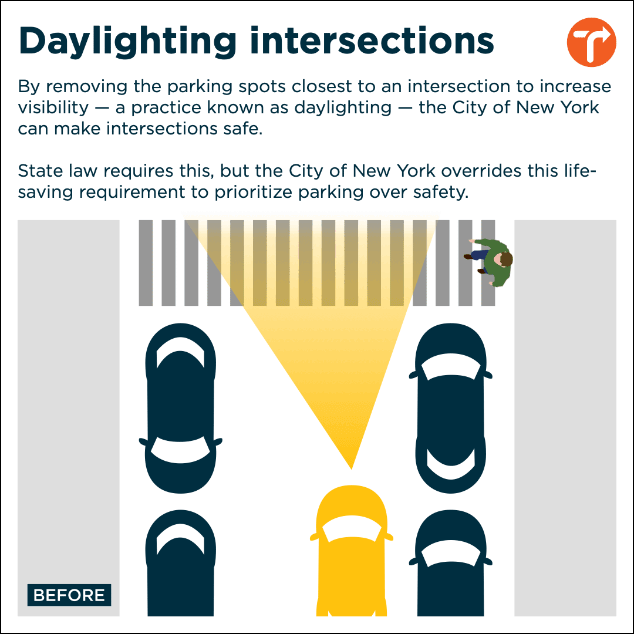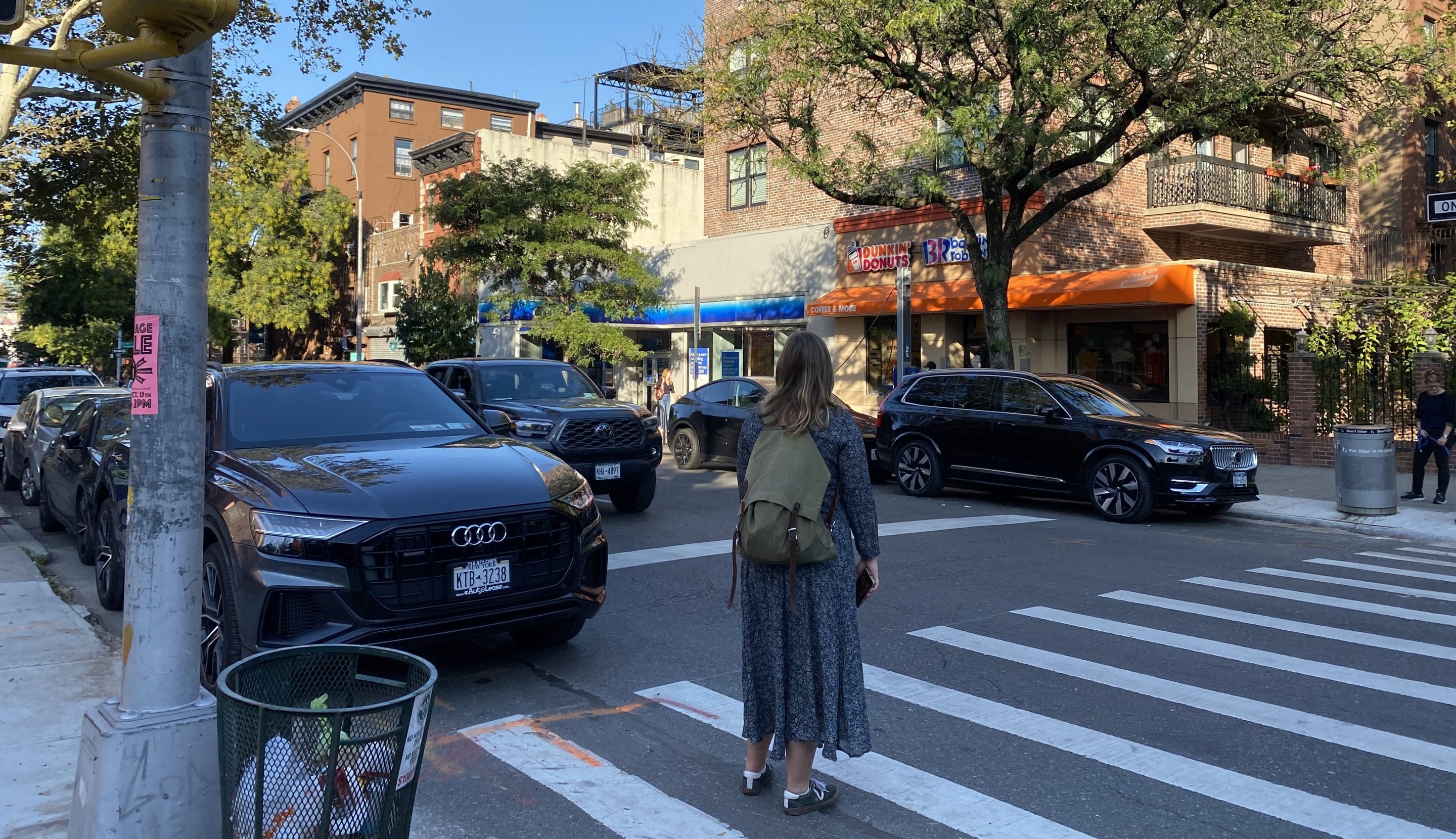New York City should follow state law and stop allowing parking at intersections — a safety and visibility measure known as daylighting, two more community boards said on Wednesday, joining a gathering wave of civic panels pushing officials to implement the well-established street safety treatment.
Queens Community Board 6 and Manhattan Community Board 6 both resoundingly backed resolutions calling for the "universal daylighting" of the city's roughly 40,000 intersections.
State law forbids any parked cars within 20 feet of a crosswalk. The city has long exempted itself from that rule — opting instead to block visibility for both pedestrians and motorists in order to maintain space for car storage.

Queens CB6, representing Forest Hills and Rego Park, unanimously passed its measure, while Manhattan CB6 on the East Side between 14th and 59th streets voted 38–3 in favor.
The two boards followed Queens CB1, which approved a call for universal daylighting in June, and CB6 in Brooklyn, which made its own daylighting recommendation last month. Northern Brooklyn CB1’s Transportation Committee is also approved a daylighting resolution last month, with a vote by the full board expected next week.
Thrilled to report that the full @QueensCB6 voted unanimously tonight to approve a resolution calling on @nycdot to amend it's rules to enforce in NYC VTL1202, which prohibits drivers from parking within 20' of any intersection & to erect physical barriers to protect those spaces https://t.co/OI2G6Tu8Ce pic.twitter.com/2bai3OWwh2
— 🚲Peter W Beadle🚲 (@pwbnyc) November 9, 2023
The issue is resonating with New Yorkers, even if it touches the political third rail of giving up parking spots. With the exception of Manhattan CB6, the board votes were unanimous.
“Then the question becomes what’s the value of a parking space, what risk are we willing to accept to preserve a parking space at the corner,” said Peter Beadle, who chairs Queens CB6’s Transportation, Public Transit, and Street Safety committee, but noted he was not speaking for the board or the committee.
The Queens resident said that despite some concerns among his fellow members about loss of parking at Wednesday night’s full board meeting, the message struck enough of a chord to get an uncontested approval.
“There are lots of heads nodding in the room. People get that they’ve had this experience that it can be hard to see someone who’s on the corner and on the other side of an SUV,” said Beadle.
The first board to pass daylighting support — Queens CB1 covering Astoria, Long Island City, and Woodside — took up the measure after a driver fatally struck 7-year-old Dolma Naadhum in February at a local intersection where cars parked right up or in the crosswalk obstructed visibility.
Emily Chingay, an advocate with the street safety group Open Plans, which shares a parent organization with Streetsblog, called daylighting "sensible and broadly appealing."
"Unfortunately we have also lost young children recently due to unsafe and un-day-lit corners — those tragedies have motivated boards to make sure that doesn’t happen in their communities," Chingay said. “Daylighting has become a point of entry for communities to have a positive impact on their streets."
Open Plans has a petition to gather support for universal daylighting.
More than half of New York City crashes happen at intersections, the site of the most conflict points between different road users and the highest volume of pedestrians, experts have said.
Cities like Hoboken have been aggressively daylighting intersections and eliminating traffic deaths.
New York City’s Department of Transportation daylighted 299 intersections so far this year, some with hard infrastructure such as bike corrals and boulders. DOT Commissioner Ydanis Rodriguez defended his agency's opt-out of state law by calling daylighting "not the right solution everywhere" and claiming it "must be implemented with physical infrastructure."
Agency leaders with hang-ups should take notice of the civic push, said Beadle of Queens CB6.
"It really shows that this is very much a concern of the public that should be taken seriously, and the more community boards that address this the better informed we are on what the community wants to see done with respects to safety," he said.
"I personally hope that our elected officials and agencies will take them very seriously."
DOT did not comment for this story.






